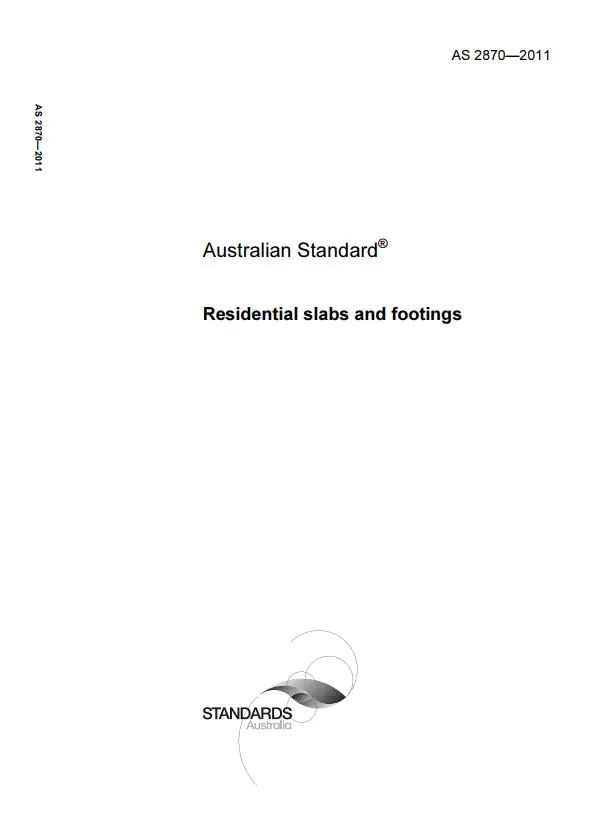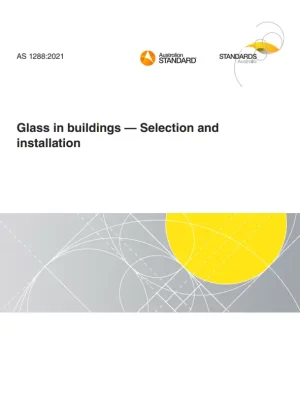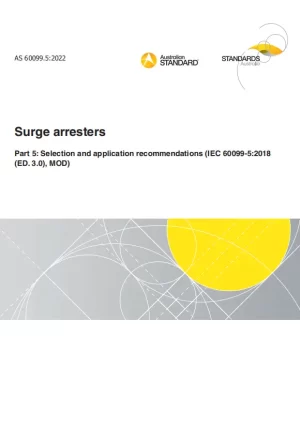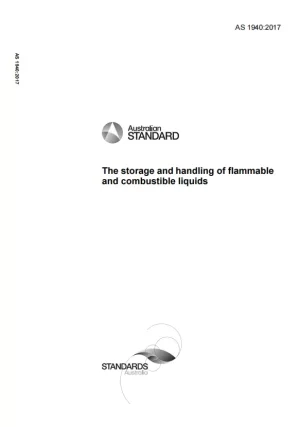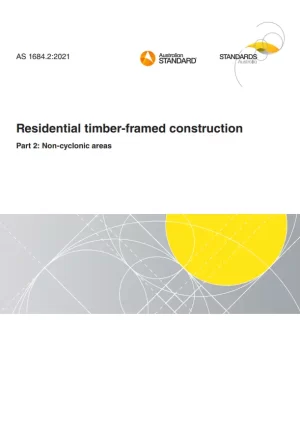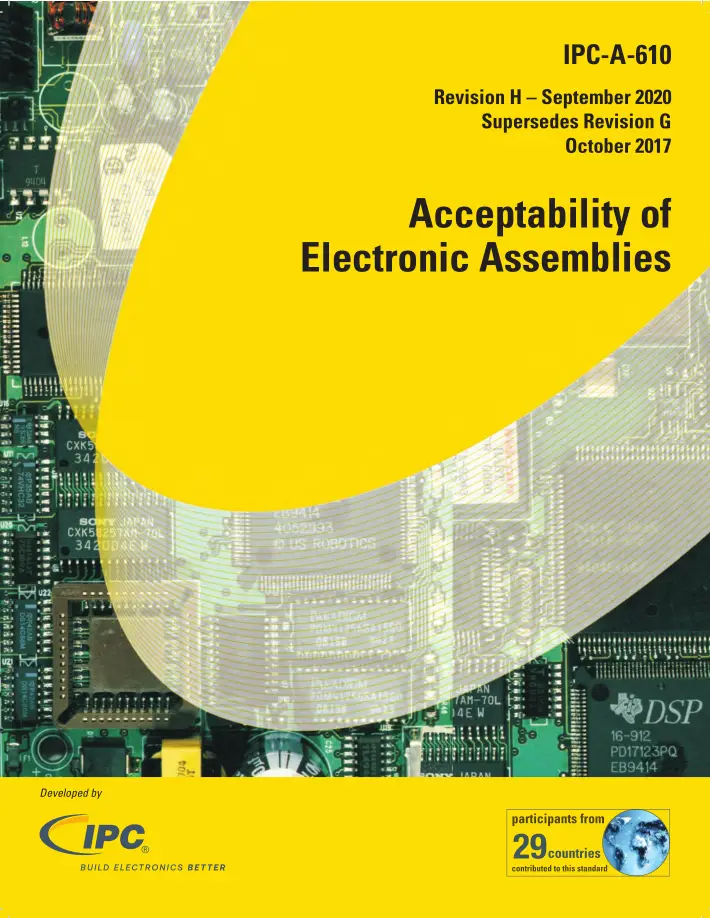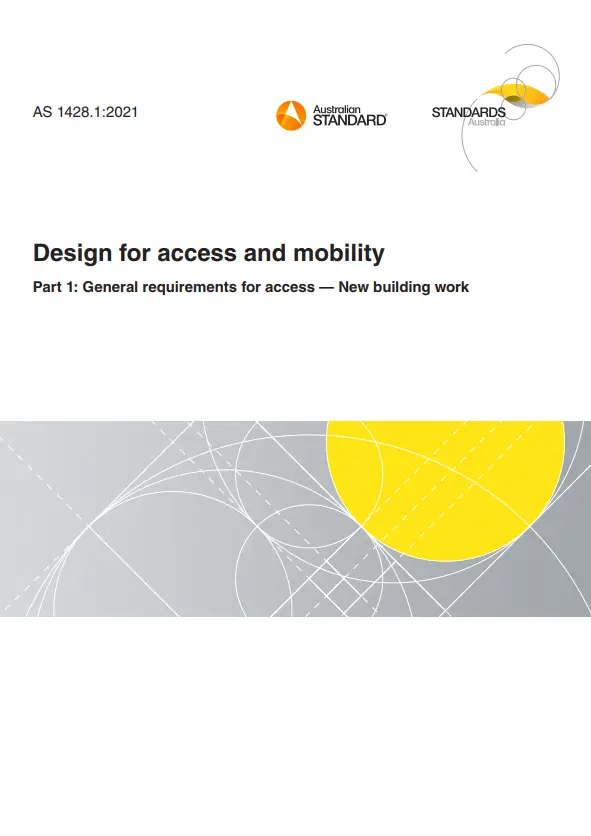AS 2870, 4th, 2011 – Residential slabs and footings
This Standard sets out the criteria for the classification of a site and the design and construction of a footing system for a single dwelling house, townhouse or similar structure which may be detached or separated by a party wall or common wall, but not situated
vertically above or below another dwelling, including buildings classified as Class 1 and
Class 10a in the Building Code of Australia.
AS 2870 may also be used for other forms of construction, including some light
industrial, commercial and institutional buildings if they are similar to houses in size,
loading and superstructure flexibility. The footing systems for which designs are given
include slab on ground, stiffened rafts, waffle rafts, strip footings, pad footings and piled footings.
NOTE: This Standard gives no advice on detailing of the connection of superstructures to the footing systems for wind loads or earthquake loads.
For design purposes, the life of the structure is taken to be 50 years.
NOTES:
1: AS 2870 has been widely used for a number of years for the economical design of footings and slabs. Economical designs that avoid significant damage are practicable only if
the soil moisture content of the foundation material under the footing or slab is stable or within reasonable limits of stability over the design life of the house or structure. For all sites (in particular sites with reactive soils) drainage and soil moisture conditions around the building need to be managed to avoid abnormal moisture conditions, as outlined in Clause 1.3.3, which may result in building damage.
2: Site management recommendations are given in Appendix B.
3: Where slab on ground construction is used for long slabs and large houses, particular
consideration in design may be needed to avoid significant damage.
4: Information on earthquake actions is included in AS 1170.4. Information on wind actions is
included in AS/NZS 1170.2 and AS 4055.
General Product Information:
| Committee |
BD-025 |
| Purchase Note |
All current amendments available at time of purchase are included with the purchase of this document |
| Document Type |
PDF |
| ISBN |
978 0 7337 9756 9 |
| Pages |
180 |
| Document Language |
English |
| Publisher |
Standards Australia |
| Status |
Pending Revision |
Preview
Table of cotents
Preface
1 Scope and general
1.1 Scope
1.2 Application
1.3 Performance of footing systems
1.3.1 General
1.3.2 Normal sites
1.3.3 Abnormal moisture conditions
1.4 Design conditions
1.4.1 General
1.4.2 Design action effects
1.4.3 Other design considerations
1.5 Deemed-to-comply standard designs
1.6 Articulation requirements
1.7 Normative references
1.8 Definitions
1.9 Notation
1.10 Reinforcement designation
1.10.1 Trench mesh
1.10.2 Square and rectangular mesh
1.10.3 Reinforcing bars
1.10.4 Substitution of reinforcement
1.11 Information in documents
1.11.1 Classification report
1.11.2 Design documents
2 Site classification
2.1 General
2.1.1 Classification
2.1.2 Site classification based on soil reactivity
2.1.3 Classification of other sites
2.2 Methods for site classification
2.2.1 General
2.2.2 Identification of the soil profile
2.2.3 Site classification based on characteristic surface movement
2.3 Estimation of the characteristic surface movement
2.3.1 Characteristic surface movement
2.3.2 Instability index
2.3.3 Soil suction profile
2.4 Site investigation requirements
2.4.1 General
2.4.2 Purpose
2.4.3 Depth of investigation
2.4.4 Minimum number of exploration positions
2.4.5 Bearing capacity
2.5 Additional considerations for site classification
2.5.1 Sites consisting predominantly of sand or rock
2.5.2 Effect of site works on classification
2.5.3 Effect of fill on classification
3 Standard designs
3.1 Selection of footing systems
3.1.1 Selection procedure
3.1.2 Design for single-leaf masonry, mixed construction and earth wall construction
3.1.3 Construction with framed party walls
3.1.4 Design for masonry feature walls
3.1.5 Design for outbuildings and extensions to dwellings
3.1.6 Design for rock outcrops
3.1.7 Design for partial rock foundation
3.1.8 Design for complete rock foundation
3.2 Stiffened raft
3.2.1 General
3.2.2 Beam layout
3.2.3 Reinforcement
3.2.4 Construction
3.2.5 Reinforced masonry
3.3 Footing slab
3.4 Waffle rafts
3.4.1 General
3.4.2 Stem width
3.4.3 Reinforcement
3.4.4 Construction
3.4.5 Piers
3.5 Stiffened slab with deep edge beam
3.5.1 General
3.5.2 Beam spacing
3.5.3 Edge wall construction details
3.5.4 Construction joints
3.6 Strip footings
3.6.1 General
3.6.2 Deep beams
3.6.3 Pads and stumps
3.6.4 Infill floors
3.6.5 Reinforcement
3.7 Reinforcement equivalences
3.8 Suspended concrete floors in one-storey construction
3.9 Footing systems for two-storey construction with suspended concrete floor
3.10 Footings for concentrated loads
3.10.1 Footings for columns
3.10.2 Footings for fireplaces on Class A and Class S sites
4 Design by engineering principles
4.1 General
4.2 Design criteria
4.3 Design of footing systems
4.4 Stiffened raft footing systems
4.5 Simplified method for raft designs
4.5.1 Application
4.5.2 Modification procedure
4.6 Design of footing systems other than stiffened rafts
4.7 Footing systems for reinforced single–leaf masonry walls
4.8 Design for piled or piered footing systems
5 Detailing requirements
5.1 General
5.2 Drainage design requirements
5.2.1 General requirements
5.2.2 Specific requirements for slabs for Class 1 buildings
5.3 Requirements for rafts and slabs
5.3.1 Concrete
5.3.2 Reinforcement
5.3.3 Vapour barriers and damp-proofing membranes
5.3.3.1 General
5.3.3.2 Materials
5.3.3.3 Properties
5.3.3.4 Installation
5.3.4 Edge rebates
5.3.5 Recesses in slab panels
5.3.6 Heating cables and pipes
5.3.7 Shrinkage cracking control
5.3.8 Beam continuity in rafts
5.3.9 Beam layout restrictions
5.4 Requirements for pad and strip footings
5.4.1 Concrete
5.4.2 Reinforcement
5.4.3 Stepping of strip footings
5.5 Requirements in aggressive soils
5.5.1 General
5.5.2 Isolation of concrete from the ground
5.5.3 Concrete strength and detailing requirements
5.6 Additional requirements for Classes M, H1, H2 and E sites
5.6.1 Masonry detailing
5.6.2 Variations in foundation material
5.6.3 Drainage requirements
5.6.4 Plumbing requirements
6 Construction requirements
6.1 General
6.2 Permanent excavations
6.3 Temporary excavations
6.4 Construction of slabs
6.4.1 General
6.4.2 Filling
6.4.3 Foundation for slabs
6.4.4 Treatment of sloping sites
6.4.5 Retention of fill under slabs for Classes A, S and M sites
6.4.6 Fixing of reinforcement and void formers
6.4.7 Placing, compaction and curing of concrete
6.5 Construction of strip and pad footings
6.5.1 General
6.5.2 Foundation
6.6 Additional requirements for moderately, highly and extremely reactive sites
Appendix A
Appendix B
B1 General
B2 Foundation maintenance
B2.1 Foundation soils
B2.2 Class A and Class S sites
B2.3 Classes M, H1, H2 and E sites
B3 Performance of walls
B4 Performance of concrete floors
Appendix C
Appendix D
Appendix E
E1 General
E2 Vertical gravity load capacity
E3 Uplift and horizontal capacity
Appendix F
F1 Analysis procedure
F2 Analysis parameters for stiffened rafts
Appendix G
G1 Design procedures for deep footings
G2 Loads
G3 Geotechnical site investigations
G4 Driven pile footings
G4.1 General
G4.2 Design actions
G4.3 Design geotechnical strength of driven piles
G5 Design of bored and excavated piers
G5.1 Pier system
G5.2 Design actions
G5.3 Design geotechnical strength of bored and excavated piles
G6 Design of steel screw piles
G6.1 Pile system
G6.2 Design actions
G6.3 Minimum depth
G6.4 Design strength of screw piles
G7 Pre-boring for piles in reactive sites
G8 Swell pressure on pile-supported footing or beam
Appendix H
H1 Limitations
H2 Definitions
H3 Maximum design drying depth (Ht)
H4 Design procedure
H5 Alternative design methods
Appendix I
COMMENTARY TO AS 2870—2011Introduction
C1 Scope and general
C2 Site classification
C3 Standard designs
C4 Design by engineering principles
C5 Detailing requirements
C6 Construction requirements
Appendix CA
Appendix CB
Appendix CC
Appendix CD
Appendix CE
Appendix CF
Appendix CG
Appendix CH
CH1 Limitations
CH2 Definitions
CH3 Maximum design drying depth (Ht)
CH4 Design procedure
CH5 Alternative design methods
Appendix CI

